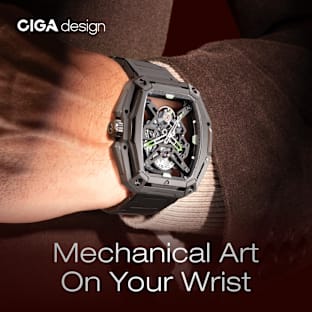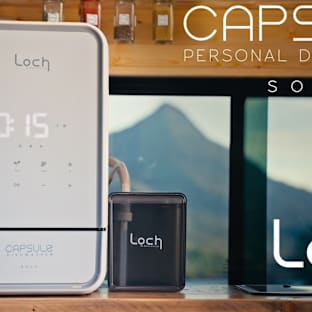Fenix Pan: The World's Lightest Cast Iron Frying Pan
![]()
After close to 3 years of research and development, we are excited to launch the Fenix Pan, the world's lightest cast iron frying pan. The Fenix Pan is a revolutionary cast iron pan developed by master metal craftspeople in Japan, a country famous for metal processing.
This 10 inch cast iron pan weighs just over 2 pounds, is very easy to handle and very durable. In fact, because of the incredible thinness of the Fenix Pan (1.5 mm), it can heat up to 100 degrees Celsius (212 degrees Fahrenheit) in about half the time of other cast iron pans. And yet, the Fenix Pan retains heat just as well as heavier cast iron pans weighing three times more.
| |
|
Lightweight Cast Iron
The secret to our lightweight pan is a combination of a specialized type of cast iron material, and a proprietary casting process that results in a durable frying pan that is as thin as a penny (1.5 mm) and weighs just over 2 pounds (1 kg)
|
![]() |
![]() |
Superior Heat Transfer
The key to cooking delicious dishes is the speed and consistency of heat conduction. The Fenix Pan not only provides excellent heat retention and consistency across the bottom of the pan, but also on the sides as well. This helps ensure ingredients cook evenly. And because the Fenix Pan is made of cast iron, you can enjoy full-flavored dishes, made on your stove top or in your oven.
|
|
Unique Cooking Surface
The ultra fine texture of the Fenix Pan's cooking surface, reduces the number of contact points with food ingredients, which lowers the chance of scorching and sticking. Plus, this cooking surface allows fat from meats and moisture from vegetables to fill these tiny crevices, which imparts a special finish to your dishes.
|
![]() |
![]() |
Compact Design
With an ergonomic handle, the Fenix Pan is perfectly suited for stovetop and oven use. While it is compact, this pan is much deeper than a typical frying pan, so it can hold a large volume of ingredients. Plus, the flared upper edge allows for easy transferring of food to your plate.
|
How It's Made
Manufacturing of the Fenix Pan begins with a proprietary precision sand cast mold that allows molten iron to be cast at a thickness of only 1.5 mm on the side walls and just 2 mm thick on the bottom. This proprietary process has taken us close to 3 years of development to perfect.
After casting, each Fenix Pan is thoroughly hand checked for quality and consistency, to ensure you receive the highest quality product that lives up to the Made in Japan name.
![]()
A precision sand cast mold is created to make the Fenix Pan casting
![]()
Fenix Pan cast molds are stacked together in preparation for pouring molten iron
![]()
Special molten iron heated to 1200℃ is prepared to create Fenix Pans
![]()
Molten iron is poured into stack of Fenix Pan castings. Precision temperature control
allows us to create a 1.5 mm thick, ultra lightweight frying pan
![]()
After Fenix Pans have finished cooling, each pan is thoroughly hand checked, prepped and
cleaned to ensure the highest, most-consistent quality
How a 500 Year Old Iron Pot Discovered In Japan Led To Inventing The Fenix Pan
![]() The town of Sanjo city (Japan) has a long history of craftsmanship. Already in the Muromachi Period (1336 - 1537 AD), some 500 years ago, Sanjo possessed casting technology so advanced that it could make extremely thin cast iron pots that would be hard to reproduce even today.
The town of Sanjo city (Japan) has a long history of craftsmanship. Already in the Muromachi Period (1336 - 1537 AD), some 500 years ago, Sanjo possessed casting technology so advanced that it could make extremely thin cast iron pots that would be hard to reproduce even today.
In 2002, several everyday items and a mold for a cast iron pot, were unearthed in the Shimocho Ruins located in Sanjo.
This discovery highlighted the existence of a group of craftsmen known as the Osaki Cast Iron Craftsmen, or Osaki Casters, who were active in Sanjo during the Muromachi Period.
The historic iron pot seen above, excavated from the Fujinoki Ruins, is thought to have been made by the Osaki Casters with the very mold discovered in the Shimocho Ruins in Sanjo.
Amazingly, this pot is only 3 mm thick! Even today, it would difficult to produce a pot as thin and fine as this iron pot made by a group of Sanjo craftsmen some 500 years ago.
Yet to surpass even this degree of thinness, was the goal for a new kind of cast iron frying pan, the Fenix Pan.
Why Lightweight Cast Iron Cookware Is Very Difficult To Make
In casting, a form is created by pouring hot, molten metal into the empty space of a mold. The molten metal starts to harden the instant it touches the mold.
The challenge is that the more constricted the space within the mold, the more likely it is that the molten iron will harden and set, before the object is fully formed - resulting in very brittle iron that would easily crack.
It is for this reason, that cast iron objects are typically cast as thick, heavy objects to overcome this challenge. But thinness was our objective, because a lighter object is more practical and easier to use.
By targeting a thinness of only 1.5 mm, we would improve on the achievements of the Sanjo craftsmen some 500 years ago. |
![]() |
How We Solved These Challenges
Using key knowledge passed down over many generations, we began development of the Fenix Pan. We started by using a special type of iron called ductile cast iron, which when cast, produces extremely strong, top-grade cast iron products.
![]()
The carbon in this iron alloy is specially manipulated into spherical nodules to prevent structural cracks. The final material is hard yet ductile, meaning that it can deform under tensile stress - perfect attributes for casting the Fenix Pan.
Development of Proprietary Sand Cast Mold
![]() Drawing upon our extensive experience manufacturing industrial-grade cast iron products, we dedicated close to 3 years of research, development, prototyping and testing to finally create an innovative sand cast mold, capable of casting molten ductile iron as thin as 1.5 mm.
Drawing upon our extensive experience manufacturing industrial-grade cast iron products, we dedicated close to 3 years of research, development, prototyping and testing to finally create an innovative sand cast mold, capable of casting molten ductile iron as thin as 1.5 mm.
The result of this 3-year journey has led to creating the lightest cast iron pan in the world - a pan we believe to be worthy of the achievements of the Osaki Casters from 500 years ago.
![]()
Testing Reveals Fenix Pan Heats Up 50% Faster Than Regular Cast Iron
Because the Fenix Pan is amazingly thin and lightweight, it is able to heat up incredibly fast. In fact, it can heat up to 100℃ (212°F) in about half the time of regular cast iron cookware.
Plus, the Fenix Pan retains heat just as well as heavier cast iron pans weighing double and even triple the weight.
Test 1: Temperature Rise to 100 Degrees Celsius (Bottom)
![]()
Our first test measured how quickly the Fenix Pan can heat up to 100℃ (212°F) compared to other popular cast iron pans.
Each pan was heated on a gas stove and the main cooking surface temp. was measured. As the graph illustrates, the Fenix Pan is able to heat up 50% faster than other cast iron pans!
The reason behind this difference, is that the Fenix Pan is made of ultra lightweight cast iron construction, and therefore has less mass to heat up. This makes the Fenix Pan highly energy efficient and provides more precise pan temperature control.
Test 2: Temperature Rise to 100 Degrees Celsius (Sides)
![]()
The second test we conducted was to see how well the sides of the Fenix Pan heat up in the same time-frame as test #1.
You can clearly see once again, that the Fenix Pan is able to heat up roughly 50% faster than other cast iron cookware.
This enables excellent heating consistency throughout the cooking surface of the Fenix Pan.
Test 3: Heat Retention Rate (Bottom)
![]()
Our final test measured how well the Fenix Pan retains heat compared to heavier cast iron pans.
This test involved heating each piece of cookware to 100℃ (212°F), then turning off the heat source to measure the rate of heat loss over time.
A key benefit of cast iron is that, as a cookware material, it is able to absorb and retain heat for a considerable period of time. This ensures consistent heating and therefore even cooking of ingredients. Amazingly, even thought the 10 inch Fenix Pan weighs just over 2 lbs (compared to other pans weighing 4-5+ lbs), it is able to retain heat in a similar way.
These tests demonstrate that the Fenix Pan not only heats up faster than regular cast iron cookware, but it also incorporates all of the best characteristics of traditional cast iron cooking: consistent heating, great heat retention, stove and oven dual use, etc. without the added weight.
About Us
Our manufacturing team consists of some of the best precision metal craftspeople in all of Japan. We are proud of the dedication and hard work demonstrated by each of our team members. It is through a shared vision and commitment, that the Fenix Pan is now finally a reality.
![]()
Thank you for supporting our Indiegogo campaign!
Frequently Asked Questions
Is the Fenix Pan non-stick?
The Fenix Pan is finished with a safe, food grade eco-friendly coating, to prevent rusting. While this coating is not inherently non-stick, the ultra fine texture of the pan makes it behave like a non-stick or seasoned pan.
Is there a lid available for the Fenix Pan?
We are currently testing a glass top lid to use with the Fenix Pan. Once we are happy with its long term performance, we will let our backers know how to order one.
What cooking surfaces work with the Fenix Pan?
The Fenix Pan is designed to work with all cooktops: electric, gas, induction, glass top, open flame, ovens, barbeques, etc. The Fenix Pan also comes with a removable silicon handle end cap which is heat resistant up to 250℃ (482°F).
Where will my Fenix Pan be shipped from?
Since our manufacturing facility is located in Japan, all orders will be shipped from our central shipping hub in Japan using Fedex.
When can I expect delivery of my Fenix Pan?
This will depend on which perk reward you selected. Every perk has a corresponding estimated delivery date.
Risks & Challenges
Manufacturing the Fenix Pan, requires precise specifications and robust system processes. We have dedicated close to 3 years of research, development and testing in preparation for full scale production.
As we begin ramping up towards full scale production, we will be ensuring that the Fenix Pan maintains the highest standards in terms of fit, finish and overall quality associated with a Made in Japan product,
Timing is a potential risk with all manufacturing projects and something we take very seriously. That is one reason why we have waited until now to introduce the Fenix Pan to you. With our full scale production systems now in place, we are confident in our ability to meet our conservative delivery estimates, and we promise complete transparency on any unforeseen issues.
































 The town of Sanjo city (Japan) has a long history of craftsmanship. Already in the Muromachi Period (1336 - 1537 AD), some 500 years ago, Sanjo possessed casting technology so advanced that it could make extremely thin cast iron pots that would be hard to reproduce even today.
The town of Sanjo city (Japan) has a long history of craftsmanship. Already in the Muromachi Period (1336 - 1537 AD), some 500 years ago, Sanjo possessed casting technology so advanced that it could make extremely thin cast iron pots that would be hard to reproduce even today.

 Drawing upon our extensive experience manufacturing industrial-grade cast iron products, we dedicated close to 3 years of research, development, prototyping and testing to finally create an innovative sand cast mold, capable of casting molten ductile iron as thin as 1.5 mm.
Drawing upon our extensive experience manufacturing industrial-grade cast iron products, we dedicated close to 3 years of research, development, prototyping and testing to finally create an innovative sand cast mold, capable of casting molten ductile iron as thin as 1.5 mm.





















